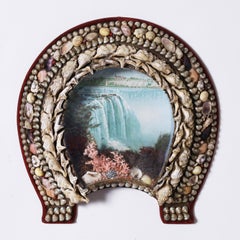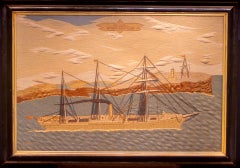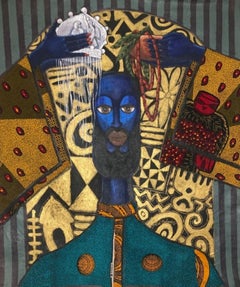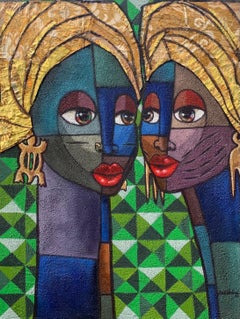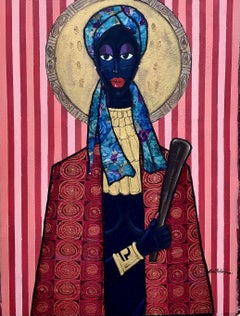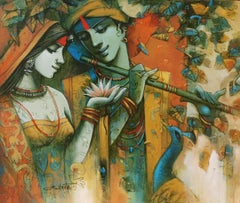Mixed Media
1890s Mixed Media
Mixed Media, Board
Late 19th Century Victorian Mixed Media
Paper
1880s Folk Art Mixed Media
Wool, Dye
Late 19th Century Contemporary Mixed Media
Canvas, Acrylic, Charcoal, Mixed Media
Late 19th Century Contemporary Mixed Media
Canvas, Charcoal, Mixed Media, Acrylic
Late 19th Century Contemporary Mixed Media
Canvas, Mixed Media
Late 19th Century Contemporary Mixed Media
Canvas, Acrylic
Late 19th Century Contemporary Mixed Media
Acrylic, Canvas
Late 19th Century Contemporary Mixed Media
Canvas, Mixed Media
Late 19th Century Other Art Style Mixed Media
Porcelain
Late 19th Century Contemporary Mixed Media
Canvas, Mixed Media
1880s Mixed Media
Cardboard
Late 19th Century Modern Mixed Media
Mixed Media
Late 19th Century Abstract Mixed Media
Fabric, Canvas, Paper, Acrylic, Pencil
Late 19th Century Modern Mixed Media
Paper, Mixed Media, Ink, Watercolor
Late 19th Century French School Mixed Media
India Ink, Pencil
1890s Mixed Media
Gouache, Watercolor
1880s Mixed Media
Mixed Media, Pastel, Ink, Watercolor
1880s Mixed Media
Photographic Paper
1880s Mixed Media
Photographic Paper
1880s Mixed Media
Photographic Paper
1880s Mixed Media
Photographic Paper
Late 19th Century Folk Art Mixed Media
Metal
2010s Contemporary Mixed Media
Canvas, Charcoal, Mixed Media, Acrylic
2010s Contemporary Mixed Media
Charcoal, Mixed Media, Canvas, Acrylic
2010s Folk Art Mixed Media
Fabric, Acrylic
21st Century and Contemporary Abstract Geometric Mixed Media
Wax Crayon, Sumi Ink, Archival Paper, Graphite
2010s Contemporary Mixed Media
Canvas, Mixed Media
2010s Contemporary Mixed Media
Canvas, Charcoal, Acrylic, Permanent Marker
2010s Contemporary Mixed Media
Mixed Media, Canvas, Paper, Charcoal, Pastel, India Ink, Acrylic
2010s Contemporary Mixed Media
Gold Leaf
2010s Folk Art Mixed Media
Fabric, Acrylic
2010s Contemporary Mixed Media
Gold Leaf
2010s Mixed Media
Mixed Media, Board, Screen
20th Century Folk Art Mixed Media
Wool, Felt
1890s Mixed Media
Paper, Pastel
Late 19th Century Mixed Media
Fabric
Late 19th Century Impressionist Mixed Media
Canvas, Oil
Late 19th Century Impressionist Mixed Media
Canvas, Oil
Late 19th Century Impressionist Mixed Media
Canvas, Oil
Late 19th Century Other Art Style Mixed Media
Marble
Late 19th Century Renaissance Mixed Media
Stone, Marble
1870s Victorian Mixed Media
Lacquer
Late 19th Century Impressionist Mixed Media
Oil, Canvas
Late 19th Century Impressionist Mixed Media
Canvas, Oil
Late 19th Century Mixed Media
Pen, Mixed Media, Watercolor
1880s Mixed Media
Paper
Shop Mixed Media Paintings and Other Art
Mixed media is a type of art that sees artists using a range of materials or more than one medium. Find a range of mixed media paintings and other artworks for your space today on 1stDibs.
Mixed media is distinct from multimedia, which describes art involving electronic media, including video, computers and digital elements. Artists combine painting, drawing, photography and sculpture for mixed media art. Instead of sticking to one form, they aim to break boundaries and create unique pieces. Pop art is one of the vibrant periods for mixed media art, with Jasper Johns and Robert Rauschenberg among its most fabled producers. Rauschenberg, like many mixed media artists, used found objects in his work, from cast-off furniture to newspapers.
Collage is one of the most well-known areas of mixed media. Artists use various types of paper, fabric, photographs and more to create one cohesive work. A type of collage is assemblage, which involves 3D objects.
While artists may use fabric in collage, it can be the very substance of the art itself. Fabric art makes extensive use of texture. Artists may paint or embroider on fabric to create layers of texture and color to evoke a specific feeling. They can also transfer photos onto fabric for innovative ways to display visuals.
Resin-based art has clean, sharp lines and a definitive shape. Resin is a liquid that hardens to a high-gloss surface and is used to seal wood, counters and floors. Resin can also seal artwork, and many artists tint it using pigment powder, ink, spray paint and other vivid materials. If water is added, the resin will turn milky instead of being completely transparent. It’s common for artists working in mixed media to use resin on nontraditional surfaces like glass, wood, metal and stone. This creates a shine that’s perfect to brighten a dull space in the home or office.
Find mixed media paintings and other art for sale on 1stDibs.
Read More
Cecilia Vicuña Merges Politics, Science and Spirituality in Her Poetic Art
The Chilean creator, who has been living in exile in New York for decades, is having a major moment, receiving the biggest exhibitions, commissions and awards an artist could dream of.
An Inspiring Collage by Self-Taught Miami Artist Purvis Young
In 1995, the artist embellished a found poster of Martin Luther King with visionary markings.
This Hypnotic Yayoi Kusama Collage Seems to Reach beyond the Canvas
In Repetition GL.A, polka-dotted protuberances rise from a surface of rippling net. Here’s what makes the piece so rare.
In the Late Hung Liu’s Historical Portraits, Layers of Joy and Struggle Are Exposed
We spoke with the artist, in one of her last interviews, about the messages in her striking figurative works, which will be featured in a posthumous show at the National Portrait Gallery.

